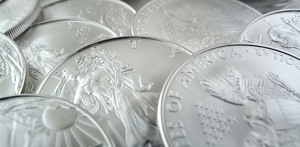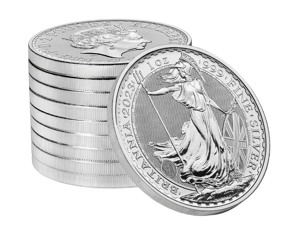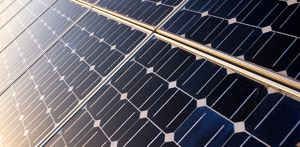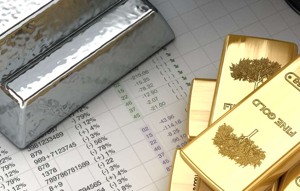Tavex uses cookies to ensure website functionality and improve your user experience. Collecting data from cookies helps us provide the best experience for you, keeps your account secure and allows us to personalise advert content. You can find out more in our cookie policy.
Please select what cookies you allow us to use
Cookies are small files of letters and digits downloaded and saved on your computer or another device (for instance, a mobile phone, a tablet) and saved in your browser while you visit a website. They can be used to track the pages you visit on the website, save the information you enter or remember your preferences such as language settings as long as you’re browsing the website.
| Cookie name | Cookie description | Cookie duration |
|---|---|---|
| tavex_cookie_consent | Stores cookie consent options selected | 60 weeks |
| tavex_customer | Tavex customer ID | 30 days |
| wp-wpml_current_language | Stores selected language | 1 day |
| AWSALB | AWS ALB sticky session cookie | 6 days |
| AWSALBCORS | AWS ALB sticky session cookie | 6 days |
| NO_CACHE | Used to disable page caching | 1 day |
| PHPSESSID | Identifier for PHP session | Session |
| latest_news | Helps to keep notifications relevant by storing the latest news shown | 29 days |
| latest_news_flash | Helps to keep notifications relevant by storing the latest news shown | 29 days |
| tavex_recently_viewed_products | List of recently viewed products | 1 day |
| tavex_compare_amount | Number of items in product comparison view | 1 day |
| Cookie name | Cookie description | Cookie duration |
|---|---|---|
| chart-widget-tab-*-*-* | Remembers last chart options (i.e currency, time period, etc) | 29 days |
| archive_layout | Stores selected product layout on category pages | 1 day |
| Cookie name | Cookie description | Cookie duration |
|---|---|---|
| cartstack.com-* | Used for tracking abandoned shopping carts | 1 year |
| _omappvp | Used by OptinMonster for determining new vs. returning visitors. Expires in 11 years | 11 years |
| _omappvs | Used by OptinMonster for determining when a new visitor becomes a returning visitor | Session |
| om* | Used by OptinMonster to track interactions with campaigns | Persistent |
| Cookie name | Cookie description | Cookie duration |
|---|---|---|
| _ga | Used to distinguish users | 2 years |
| _gid | Used to distinguish users | 24 hours |
| _ga_* | Used to persist session state | 2 years |
| _gac_* | Contains campaign related information | 90 days |
| _gat_gtag_* | Used to throttle request rate | 1 minute |
| _fbc | Facebook advertisement cookie | 2 years |
| _fbp | Facebook cookie for distinguishing unique users | 2 years |
What Determines The Price of Silver? A Beginners Guide

As a trusted seller of gold and silver in the UK and Northern Europe, Tavex is excited to share valuable insights on what influences the price of silver.
Silver, often overshadowed by its more glamorous sibling, gold, is a remarkable precious metal with unique allure. In this guide, we’ll explore the factors influencing silver prices, making it an enticing asset for investors and industries alike.
Why Silver is a Precious Metal
Silver’s allure as a precious metal goes beyond its modest appearance. Its scarcity and intrinsic properties make it a coveted asset with diverse applications. As a limited resource, the demand for silver consistently outstrips its supply, adding to its value as a reliable investment option. Additionally, silver plays a vital role in various industries, thanks to its exceptional conductivity and reflective nature.
Throughout history, silver has been cherished as a store of value and a medium of exchange, earning its place as a timeless investment choice. Furthermore, silver serves as an effective hedge against inflation, providing protection against the erosive effects of fluctuating currencies.
In the following sections, we’ll delve deeper into the factors influencing silver prices and explore its significance as a precious metal in the dynamic landscape of investment opportunities. Let’s uncover the secrets behind the silver market and equip you with the knowledge you need to make informed investment decisions. With Tavex as your trusted guide, you can confidently navigate the exciting world of precious metals investment.

Supply and Demand Dynamics:
The intricate interplay of supply and demand is a fundamental driver behind the fluctuations in silver prices. Silver finds itself in a unique position as a precious metal, alongside gold, platinum, and palladium. While it may not possess the same rarity as gold, its scarcity plays a significant role in its value as an investment asset.
- Limited Supply and Constant Demand: One of the key factors contributing to silver’s allure is its limited supply. Unlike fiat currencies, which can be printed at will, silver is a finite resource extracted from mines across the globe. As industrial demand and consumer interest continue to rise, the supply of silver cannot always keep pace, resulting in an inherent scarcity.
On the other hand, silver enjoys a constant and diverse demand across various industries. Its exceptional properties, such as electrical conductivity and thermal efficiency, make it indispensable for technological applications like renewable energy, electronics, and medical devices. Additionally, silver’s use in jewelry and silverware persists as a cherished tradition worldwide.
- Impact of Disruptions and New Industrial Uses: The delicate balance between supply and demand can be perturbed by various factors. Disruptions in mining operations due to labor strikes, geopolitical conflicts, or adverse weather conditions can cause temporary supply shortages, leading to price fluctuations. Similarly, shifts in industrial applications, such as the adoption of silver in emerging green technologies, can spur increased demand and drive prices upwards.
- The Influence of Market Sentiment: Apart from physical supply and demand, market sentiment and investor behavior also play a role in shaping silver prices. Economic uncertainties, geopolitical tensions, and changes in interest rates can trigger shifts in investor sentiment towards precious metals. In times of financial instability, investors often turn to silver as a safe-haven asset, driving demand and boosting prices.
In conclusion, the delicate balance between limited supply and constant demand makes silver a captivating asset for investors. Understanding the dynamics of supply and demand is crucial to navigating the world of silver investment. As we move forward in this guide, we will explore additional factors that contribute to silver’s value and provide you with the knowledge needed to make informed investment decisions.
Silver as a Safe-Haven Investment:

Throughout history, silver has earned a reputation as a safe-haven investment, sought after in times of economic uncertainty and market turbulence. Its role as a reliable store of value has a profound impact on silver prices during both difficult and prosperous times.
- Silver’s Resilience in Difficult Times: During periods of economic crises, geopolitical tensions, or market volatility, investors often seek refuge in precious metals, including silver. Silver’s status as a safe-haven asset means that its demand increases when traditional investments like stocks or currencies face uncertainty. As a result, silver prices tend to rise during these periods, reflecting heightened investor interest.
- The Impact of Market Optimism: Conversely, when markets are performing well and economic indicators are positive, investors may shift their focus away from safe-haven assets like silver. A robust economy and strong financial markets may lead to decreased demand for precious metals, including silver, as investors seek higher-yield opportunities.
- Inflationary Hedge: Besides acting as a safe-haven investment during economic crises, silver also serves as a hedge against inflation. When central banks implement expansionary monetary policies or when there is a rise in consumer prices, the value of paper currencies may erode. In such scenarios, investors turn to silver as a safeguard against the loss of purchasing power. As inflation concerns rise, the demand for silver tends to increase, driving prices upwards.
- Investor Sentiment and Silver Prices: Market sentiment plays a crucial role in influencing silver prices. Perception and speculation about future economic conditions, geopolitical events, or monetary policy decisions can trigger fluctuations in investor sentiment towards silver. Positive news and optimism may lead to temporary dips in silver prices, while negative sentiment may prompt investors to flock to silver as a haven, pushing prices higher.
- Long-Term Value: While short-term fluctuations in silver prices are influenced by market sentiment, the long-term value of silver remains steadfast. Its enduring role as a store of value and its indispensable industrial applications continue to underpin its importance as a precious metal in a diversified investment portfolio.
In conclusion, silver’s status as a safe-haven investment significantly impacts its price during both challenging and prosperous times. As investors seek stability and protection from market uncertainties, silver’s demand rises, pushing prices higher. Understanding the interplay between market sentiment and silver prices is crucial for investors looking to capitalise on the unique qualities that make silver a valuable asset.
Industrial Applications of Silver:

Silver is not just a beautiful metal for jewellery and investment; it also has many important uses in industries. Let’s explore some of the key ways silver is utilised in various fields:
- Renewable Energy and Technology: Silver plays a crucial role in solar panels, helping to turn sunlight into clean energy. As the world adopts more renewable energy sources, the demand for silver in solar panels is expected to increase.
- Technology Advancements: As technology advances, so does the demand for silver. Silver is used in electronic devices like smartphones and laptops because of its excellent electrical conductivity and reliability.
- Green Applications: The global push for sustainable practices has boosted the demand for silver in green technologies, such as electric vehicles and solar power.
- Steady Demand: Unlike some other metals, silver enjoys steady demand because of its many industrial uses, making it a reliable investment option.
- Importance in Key Industries: Silver’s significance extends beyond renewable energy and technology. It is also essential in healthcare, photography, and chemical production due to its antibacterial and light-sensitive properties.
These industrial applications contribute to the demand for silver, affecting its prices in the market. As we continue to explore further, we’ll uncover more factors that influence silver’s price dynamics, helping you make wise investment choices.
Global Economic Trends:
The connection between economic conditions and silver prices is a crucial aspect that influences the demand and investment appeal of this precious metal. Economic trends and indicators play a significant role in shaping the sentiment of investors towards silver, impacting its price dynamics.
- Impact of a Strong Economy: During periods of economic prosperity and growth, investors may shift their focus towards riskier assets, such as equities and higher-yielding investments. A strong and stable economy tends to decrease the demand for safe-haven assets like silver, as investors seek greater returns in more favorable market conditions.
- Demand from Industrial Sectors: A thriving economy often spurs increased demand for silver in industrial sectors. As manufacturing, construction, and technology industries flourish, the need for silver in electronics, automotive components, and infrastructure projects grows. This surge in industrial demand can have a positive influence on silver prices.
- Inflationary Pressures: A buoyant economy may also lead to inflationary pressures as consumer spending rises and demand outpaces supply. In such scenarios, investors may turn to silver as a hedge against inflation, driving demand and supporting silver prices.
- Economic Indicators and Investor Sentiment: Monitoring economic indicators, such as GDP growth, employment rates, and consumer confidence, is crucial for investors considering silver investments. Positive economic data may lead to a decrease in silver demand, as investors become more optimistic about riskier assets. Conversely, economic uncertainty or signs of potential downturns can fuel the appeal of silver as a safe-haven asset, increasing its demand and boosting prices.
- Long-Term Perspective: While short-term fluctuations in silver prices are influenced by economic trends, it’s essential to maintain a long-term perspective when considering silver as an investment. The role of silver as a tangible store of value and its wide-ranging industrial applications contribute to its enduring appeal, regardless of short-term economic conditions.
In conclusion, global economic trends have a significant impact on silver prices, with economic conditions shaping the demand and investment sentiment towards this precious metal. Investors should be attentive to economic indicators and consider silver’s dual role as both a safe-haven asset and a vital material in various industries when making informed decisions about silver investments.
The Silver Price Calculation:
The silver price is determined and quoted in the international market per ounce, typically denominated in US dollars. Several factors contribute to the calculation of the silver price, and understanding this process is crucial for investors seeking to navigate the precious metals market.
- Global Market Forces: The silver market operates on a global scale, with supply and demand dynamics influenced by various factors worldwide. Market forces, such as industrial demand, investor sentiment, geopolitical events, and economic trends, play a significant role in determining the price of silver.
- Spot Price: The spot price refers to the current market price of silver for immediate delivery and settlement. It represents the real-time value of silver and is used as a benchmark for pricing silver contracts and products. The spot price is constantly fluctuating based on changing market conditions and can be accessed through various financial platforms and precious metal websites.
- Currency Fluctuations: Currency fluctuations can have an impact on silver prices in different regions. Since the silver price is quoted in US dollars, changes in exchange rates between the US dollar and other currencies can influence the cost of silver for investors in different countries. For example, if a country’s currency weakens against the US dollar, the price of silver in that country may rise, while it may decrease if the currency strengthens.
- Premiums and Discounts: In addition to the spot price, investors may encounter premiums or discounts on silver prices when purchasing physical silver products. Premiums represent the additional costs above the spot price that buyers pay for items like coins, bars, or bullion due to factors like minting, refining, or dealer fees. Discounts, on the other hand, occur when sellers offer silver products below the spot price.
- Futures and Derivatives: Investors and speculators in the silver market often use futures contracts and derivatives to buy or sell silver at a predetermined price in the future. These contracts allow investors to hedge against price fluctuations or take speculative positions in silver without physically owning the metal. The futures market plays a role in determining future price expectations and can influence spot prices.
- Relevance to Investors: The spot price of silver is of paramount importance to investors, as it reflects the immediate value of the metal. Investors can use the spot price as a reference when buying or selling physical silver or silver-related investment products. It also helps investors track price movements and make informed decisions regarding their silver holdings.
In conclusion, the silver price is determined by a combination of global market forces, currency fluctuations, and factors specific to the precious metals market. The spot price serves as a crucial benchmark for investors, guiding them in their investment choices and providing insights into the dynamic world of precious metal trading. Understanding the intricacies of the silver price calculation empowers investors to make well-informed decisions in the silver market.
Is silver better than gold?

Over the past five years, the price of silver (up about 50 per cent) has outperformed gold (up about 40 per cent). However, because the silver market is significantly smaller than the gold market, prices also fluctuate more. Folker Hellmeyer, chief analyst at the investment consultancy Solvecon Invest, says: “Silver is more aggressive in downward movements and thus riskier than gold. On the other hand, silver is mostly more dynamic on the upside as well.” Unlike gold, however, silver is affordable for people on a budget.
Because a kilo bar of gold currently costs almost 50,000 euros, whereas a kilo bar of silver costs less than 1,000 euros.
Conclusion
As we conclude our exploration of the factors influencing the price of silver, it becomes evident that this precious metal is not only a symbol of beauty and elegance but also an essential player in the global economy. Silver’s unique characteristics, relative scarcity, and versatile industrial applications make it a sought-after asset for both investors and industries worldwide.
The delicate interplay of supply and demand, driven by economic conditions, geopolitical events, and technological advancements, shapes the ever-changing landscape of silver prices. As a safe-haven investment, silver offers a valuable hedge against economic uncertainties and inflationary pressures. Additionally, its critical role in green technologies and renewable energy further fuels its bullish demand in an environmentally conscious world.
For investors looking to diversify their portfolios and preserve wealth, understanding the factors that influence silver prices is paramount. The significance of the spot price, denominated in US dollars per ounce, serves as a key reference point for investors seeking to buy or sell silver products.
Whether you are a first-time investor or a seasoned expert, the world of precious metals can be both exciting and complex. As the largest seller of gold and silver in northern Europe, Tavex is dedicated to providing trusted guidance and a wide range of investment options for all individuals seeking to embark on this rewarding journey.
As you navigate the precious metals market, remember to consider the balance of economic trends, technological advancements, industrial demand, and investor sentiment. By staying informed and vigilant, you can make prudent decisions and harness the potential of silver as a timeless store of value and a versatile asset in an ever-changing global landscape.

















